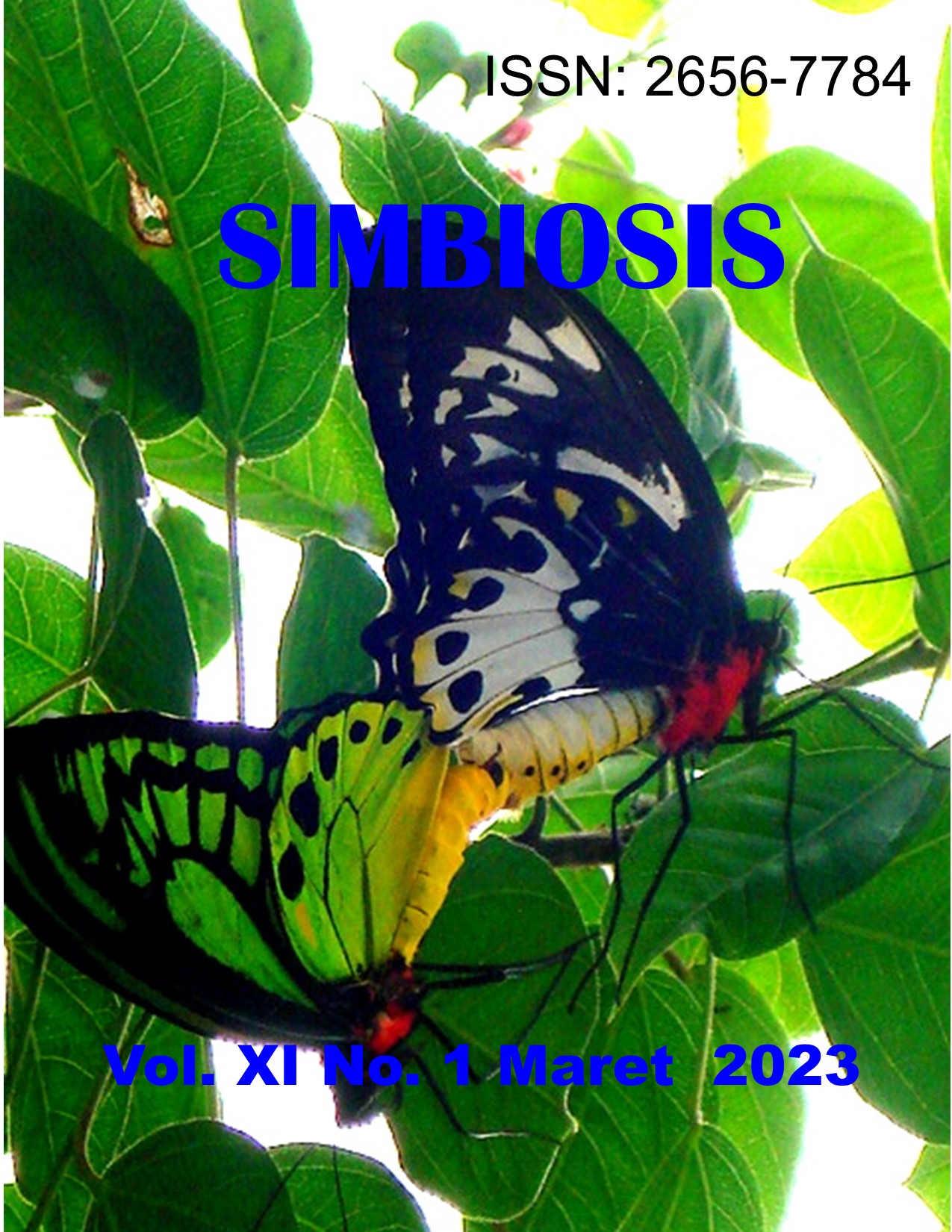KEANEKARAGAMAN SPICIES MOLUSKA DI HUTAN MANGROVE KAWASAN EKOWISATA KAMPOENG KEPITING, DESA TUBAN, BALI
Abstract
Kampoeng Kepiting is one of the areas to seek ecotourism conservation which is supported by the government through Pertamina's Corporate Social Responsibility which is a social responsibility for environment (CSR) assistance to manage and utilize the potential of mangroves and foster nurseries for aquaculture. The structure of the mollusk community characterizes the quality of mangroves and becomes an attraction for ecotourism and aquaculture activities. There is not much information about the existence of mollusks in the mangrove forest of the Kampoeng Kepiting Ecotourism Area, so this study was conducted to determine the types of mollusks and their level of diversity in the area. Sampling was carried out in the natural mangrove zone and the reforestation mangrove zone, each of them which was five sampling plots. Sampling of mollusks was carried out using the square method measuring 1mx1m. The mollusk samples obtained were then brought to the laboratory in Biology Department for identification. There were 12 species of mollusks found in the Kampoeng Kepiting mangrove forest, including 11 species in the Gastropod class and 1 species in the Bivalvia class. The level of diversity of mollusks in general is moderate, with an index value of 2.12.
Keywords: Diversity, mollusk, ecotourism potential.
Downloads
References
Dharma, B. 1988. Siput dan Kerang Indonesia I (Indonesian Shell). PT. Sarana Graha. Jakarta.
Fratini S, Vigiani V, Vannini M, Cannicci S. 2004. Terebralia palustris (Gastropoda;Potamididae) in Kenyanmangal: Size structure, distribution and impact on the consumption of leaf litter. MarBio l144 (6):1173-1182.
Ginantra, I.K., A.A.K Darmadi, I B.M Suaskara dan I K.Muksin. 2018. Keanekaragaman jenis mangrove pesisir Lembongan dalam menunjang kegiatan wisata mangrove tour. Prosiding Seminar Nasional Pendidikan Biologi. Mataram. ISBN:978-602-61265-2-8. to stream inorganic carbon cycling. Oecologia. 163: 235-244.Marin, F., Luquet, G. 2004. Molluscan shell proteins. Comptes Rendus Palevol. 3 (6–7): 469. doi:10.1016/j.crpv.2004.07.009.
Kitamura, S., Anwar C., Chaniago, A. dan Baba, S. 1997.Handbook of. Mangroves in Indonesia.The Development of Sustainable Mangrove. Negara Kepulauan Republik Indonesia. Journal Ilmiah Platax, 9(2), 92–101.
Oseanna. Aziz, M. Furqon. 2008. Gerak Air di Laut. Oseanografi LIPI vol XXXVI.
Spalding et al., 1997 dalam Noor et al., 1999. Inventarisasi permudaan bakau (Rhizophora spp.) di wilayah kelola KPH Unit V Bengkalis Provinsi Riau. Universitas Riau, Jambi.
Stiling, P. 1996. Ecology, Theories and Aplications. Prentice Hall Internationan Inc. New Jersey.
Suartini, N. M., Sudaryanto, Sudatri, N. W. 2013. Inventarisasi jenis molusca di Mangrove Information Centre Taman Hutan Raya Ngurah Rai Bali. Jurnal

This work is licensed under a Creative Commons Attribution 4.0 International License.










